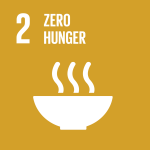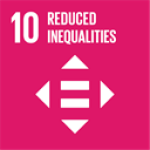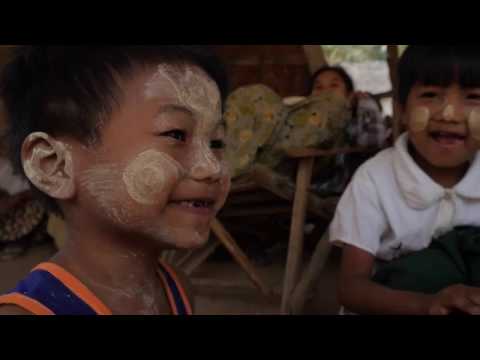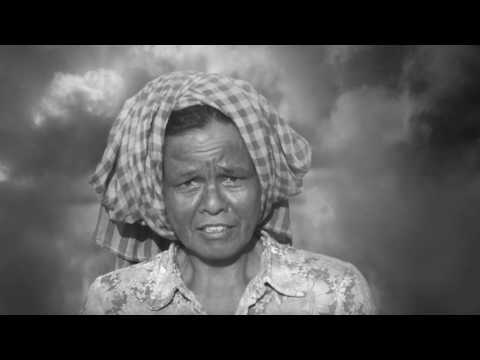
This project (2015 - 2019) focused on reducing the vulnerability of farmers in Myanmar’s Dry Zone to increasing drought and rainfall variability, as well as enhancing their capacity to plan for and respond to future climate change impacts on food security.
Focused on five of the most vulnerable townships of Myanmar’s Dry Zone, the four-year project reduced the risks and effects from recurring droughts, floods and erosion through an integrated water management, crop and livestock adaptation programme.
Project activities were based on principles of local empowerment and implemented by grassroots organizations such as farmer groups, communal forest user groups, community-based organizations and local NGOs.
- Community
- National Governments
Marginal Farmers; Landless Workers; Women
- Ministry of Natural Resources and Environmental Conservation, Government of Myanmar
- United Nations Development Programme (UNDP)
- Adaptation Fund
Expected outcomes
Component 1: Respond to the climate-induced reduction of freshwater supply
Enhance water capture and storage in 280 villages (Output 1.1) while protecting and rehabilitating 4,200 hectares of micro-watersheds through Farmer-Managed Natural Regeneration strategies (Output 1.2), including the use of community-based agro-forestry plots on 7,650 hectares of private and communal lands to conserve soil and water (Output 1.3).
Component 2: Climate-resilient flood and livestock production systems established and promoted
Provide drought-resilient varieties and conservation agriculture practices to 12,600 households on 5,100 hectares of drought-prone land (Output 2.1), along with post-harvest processing and storage systems for safe handling of agricultural produce during extreme climate events (Output 2.2). Introduce diversified livestock production system in 6,300 households to buffer effects of flooding and drought (Output 2.3).
Component 3: Improve communal climate risk information and monitoring
Develop climate hazard maps and risk scenarios in each township (Output 3.1), as well as 5 climate risk information centers (Output 3.2) to support and communicate risk management planning, preparedness, and early warning information.
- Image

- Image

- Image

- Image

- Image

According to the Asian Development Bank, Myanmar is among the most vulnerable countries to climate change. In the country’s Dry Zone, home to about 18 million people, drought and water scarcity are the dominant climate-related hazards. The Dry Zone has become the most food insecure region of the country. Irregular dry spells and drought have resulted in recurring extreme water shortages, which in turn constitute a constant threat to the livelihoods of the rural poor.
This project operated in five townships: Shwebo and Moneywa in the Sagaing region, Myingyan and Nyaung Oo in the Mandalay region, and Chauk in the Magway region. The townships were selected on the basis of observed temperature extremes, frequency of drought per year, and the impacts of these climatic parameters on food security. The direct beneficiaries of the project were marginal farmers and landless workers whose access to arable land is severely threatened by erosion and land degradation. Special emphasis was placed on women and female-headed households within this vulnerable group.
Taking a strategy based on principles of local empowerment, this project made key technical investments in the targeted townships. Impoverished and marginal farmers in these areas benefited from the project’s additional investments in natural and productive capital, such as improved water supply on drought-prone fields; access to diversified and improved crops for fields and home gardens; expanded agro-forestry services; diversified livestock rearing; and arrested soil erosion and watershed protection. Landless people benefited from diversified livestock assets, improved ecosystem services, and greater opportunities for manual labor in water-, forestry- and agroforestry-related components of the project. Additionally, the project strengthened landless peoples’ participation in community-based organisations, especially forest user groups.
'Enhancing Food Security through Improved Post-Harvest Practice in the Dry Zone of Myanmar' - UNDP Myanmar, June 6, 2018. The Department of Agriculture, Ministry of Agriculture, Livestock and Irrigation and UNDP hand over a seed storage facility to a farmers’ group in Boe Daw Taw village in Shwebo township.
'Stepping up: The story of one Myanmar woman farmer leading the way' - Karma Rapten, Climate Change Adaptation Specialist at UNDP Myanmar, March 8, 2018. On International Women’s Day, UNDP celebrates women’s achievements and the leading role women play in realising the 2030 Agenda. In 2018 we recognise #Champions4Equality — champions like Daw Maa Dee of Du Win village.
'Running Dry: A Window into the Dry Zone of Myanmar' - Yusuke Taishi, Regional Technical Advisor, February 26 2018. In pictures, a view into life in the Dry Zone, including the challenges communities face — and some of the solutions, including achievements of the AF-funded Dry Zone project so far.
See UNDP's Transparency Portal for reports.
The monitoring and evaluation (M&E) scheme of the project was applied in accordance with the established UNDP procedures throughout the project lifetime. The UNDP Country Office in Yangon ensured timeliness and quality of project implementation. Technical guidance and oversight was provided by UNDP’s Asia Pacific Regional Center (APRC) and Project Team (PT). Project audits followed UNDP finance regulations and rules and applicable audit policies.
- Yusuke TaishiRegional Technical Advisor






